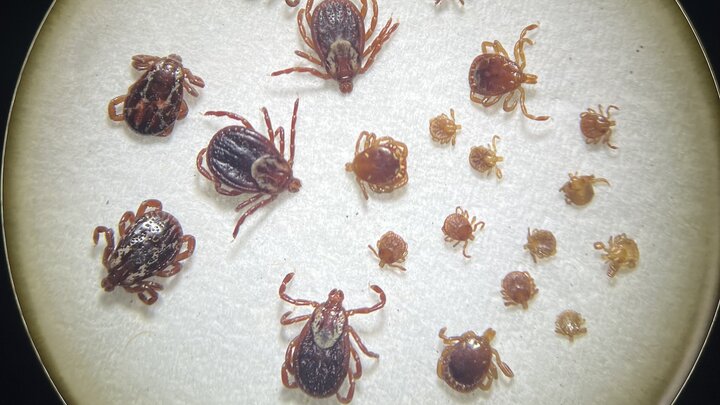You are not imagining it, this has been a very heavy tick spring and summer, and we cannot let our guard down. High tick season in Nebraska is April through June, but ticks will continue to be a concern through our growing season (and beyond). With milder winters, longer and warmer summers, increased involvement in outdoor activities, and abundance of wildlife in our backyards, Nebraskans must be prepared to practice tick safety to prevent tick-borne illnesses.
Tick-borne Illness
Aside from Lyme disease, other illnesses associated with tick bites include Rocky Mountain spotted fever and other rickettsioses, tularemia, ehrlichiosis, southern tick associated rash illness (STARI), babesiosis, and the alpha-gal syndrome (AGS). The Nebraska Department of Health and Human Services shares tick surveillance data and disease reports on their website. As of this year, AGS, also known as the red meat allergy, is a reportable disease. To learn more visit the CDC website.
Identification
Ticks have two body parts and eight legs (larvae or “seed ticks” have six) and require a blood meal to develop from larva to nymph, nymph to adult, and then produce eggs. All seed ticks are tiny, so ticks cannot be identified based on size alone. Tick species can be distinguished from one another by the length of the mouthparts and the pattern or markings on the scutum, which is the shield-like area located behind the tick’s head. The male’s scutum covers the entire body, whereas the female has a small scutum to allow her to engorge during blood feeding.
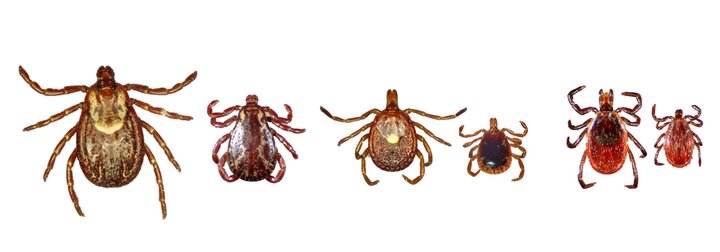
Ticks are wingless, blood feeders and have the potential to vector some serious diseases of both people and pets. The three most common ticks found in eastern Nebraska are the American dog tick, Dermacentor variabilis, lone star tick, Amblyomma americanum, and black-legged tick, Ixodes scapularis. Only the black-legged tick is capable of transmitting Lyme disease, but the more commonly found ticks are known vectors of some other harmful diseases as well.
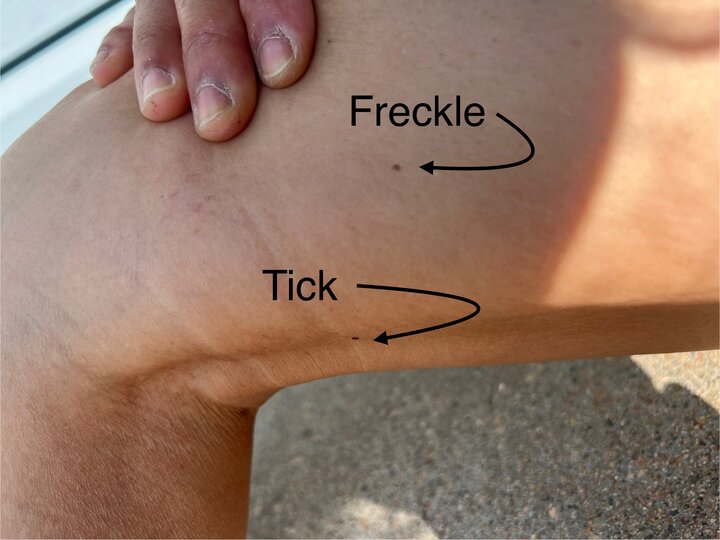
Tick Pictures and Specimens
Whether you find a tick crawling in the environment or removed from a person or animal, it is good practice to have it identified. With new tick species being identified in the state, records of tick presence are critical to understanding which species are found where we live, work, and play. There are many online resources to assist in identifying tick species, and smart phone apps may be helpful based on the quality of the specimen and photo. Tick Tag Go is a community-powered effort to establish baseline data on tick distributions in Nebraska.
Biology & Behavior
Ticks found in Nebraska are three-host ticks, which means they require a different host for each life stage. The entire life cycle may take up to two years to complete. Ticks find their hosts through an action called “questing” on low-laying vegetation, which involves waiting patiently with their front legs extended for an animal (or human) to brush by. Lone star ticks are aggressive host seekers and actively move across the ground when they sense carbon dioxide from a nearby host. Contrary to widely held belief, ticks do not jump or fall onto hosts from above – as soon as they find a host, they move upwards.
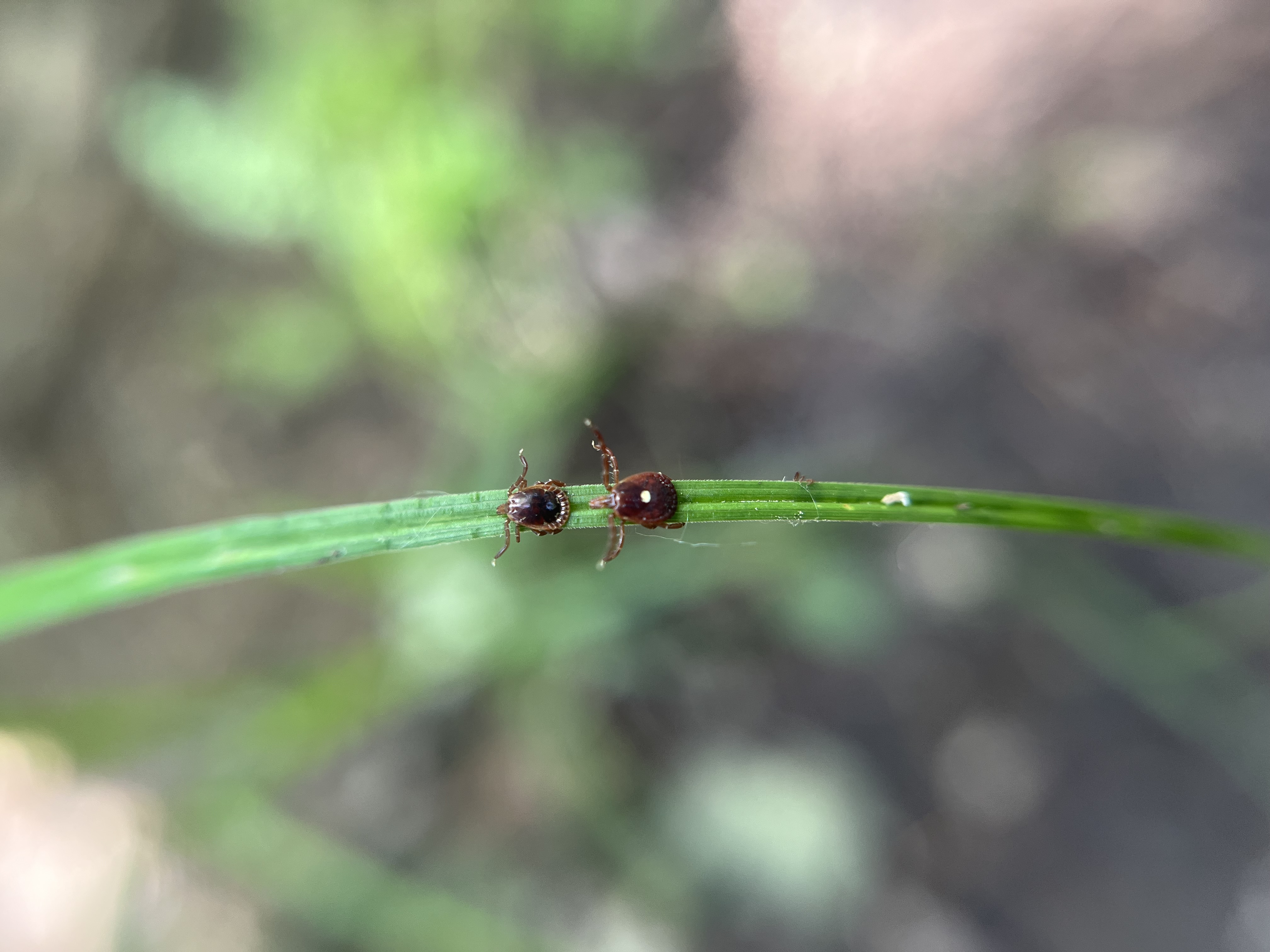
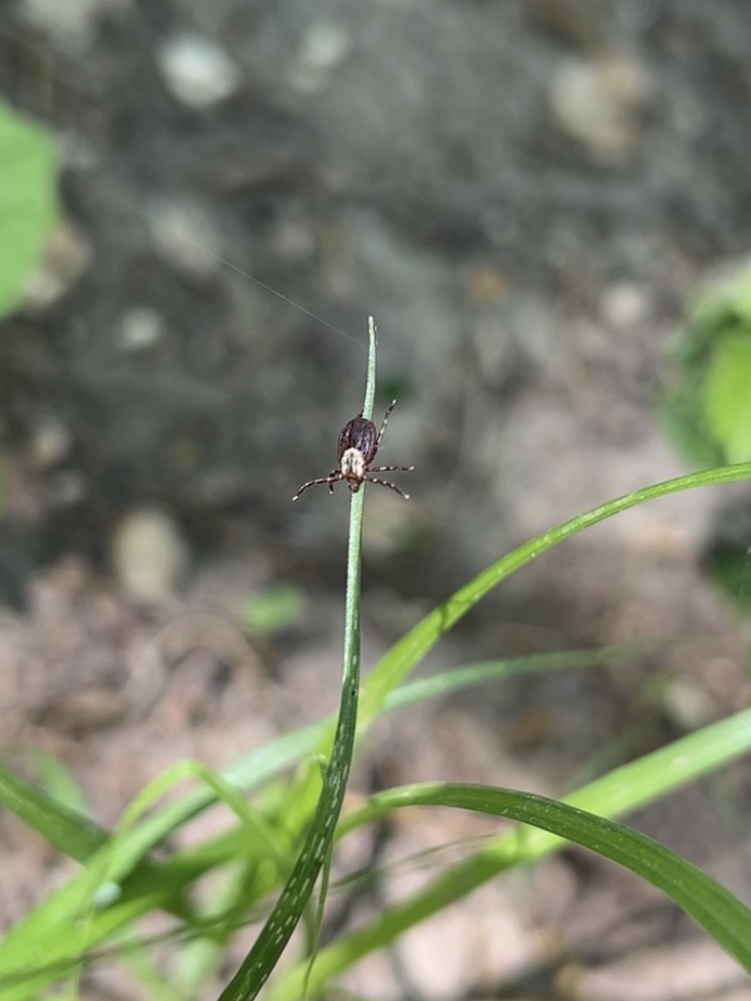
Tick Feeding
Once a tick has found a host, it cuts the skin with its saw-like mouthparts and drives a rigid feeding apparatus with backwards spines deep into the skin. This securely anchors the tick in place while feeding. Ticks can feed and remain embedded for several days if undisturbed. Once the tick is fully engorged, it falls off the host, molts to the next stage of development and either finds a new host, or as an adult female, lays hundreds of eggs. In some cases, the longer an infected tick is attached, the more potential to transmit illness, so it is best to remove embedded ticks as soon as possible.

Tick Testing
As of May 2025, Nebraska Tick Testing (NeTT) at UNMC started a free tick testing service to screen submitted ticks for a variety of pathogens. The purpose of tick testing is to strengthen the knowledge of what pathogens ticks carry as their geographic distribution expands and helps inform the public about potential pathogen exposure. This service is not to be used as a medical diagnosis. If you are showing signs or symptoms of tick-borne disease, contact a medical professional.
Preventing Tick Bites
It is important to prevent tick bites and remove them before they get a chance to transmit disease. Here are some actions you can take to protect yourself.
1. Reduce exposure and chances of bringing them home.
- Wear light-colored clothing to make it easier to visually spot ticks and remove them before they bite.
- Choose to wear long pants, tucked into socks so ticks are detected and removed as they move upwards.
- Put outdoor clothes in the clothes dryer on high heat for 20 minutes to kill any hitchhiking ticks on clothing. Ticks will survive the wash cycle and can easily escape the laundry hamper and seek out a host.
2. Repellents for skin and treatments for clothing.
- Designate clothing for your outdoor excursions and treat clothing and shoes with a permethrin clothing spray, which can repel and kill ticks for up to six washings (read the label).
- Purchase pre-treated clothing designed to repel insects that can last through 70+ washes.
- Understand the limitations of DEET and other EPA-approved repellents against ticks when applied to the skin. Ticks move quickly and can walk around, and bypass treated areas to bite elsewhere.
3. Remember to treat and check your pet.
- Protect your pets by following a tick prevention program as outlined by your veterinarian. This should be started earlier in the season than expected and scheduled regularly (usually monthly).
- Even if pets are on a preventative program, they can still introduce ticks into living spaces that can impact people. Perform tick checks before bringing pet into vehicle or home, especially the face, in and around the ears, under the collar, and between the toes.
4. Remove ticks right away and check often.
- Perform regular, full body, tick checks on your person and children, and if possible, shower within two hours of coming in from outdoors. On people, American dog ticks are most often found on the scalp and around the ears. Lone star ticks are most often found attached around waist, groin area, thighs, and behind the knee.
- To quickly remove wandering ticks from clothing or furniture use a sticky lint roller or masking tape.
- When a tick is embedded, practice safe tick removal by using pointy tweezers to grasp the tick as close to the skin’s surface and pull straight out. After removing the tick, disinfect affected skin with rubbing alcohol and keep tick for identification.
- Hold on to your tick by placing in a plastic bag and storing it in a freezer, so you can have it identified. If adverse reactions occur such as fever or rash, contact your physician and let them know you were bitten by a tick. The species will help narrow down which potential illnesses you may be treated for.
Ticks and Gardening
We do not have to go far to be exposed to ticks and their bites. In fact, several of us have been bitten by ticks in our own yard. We strive to create beautiful gardens, habitats for pollinators, edible landscapes, and sanctuaries for wildlife. And while we invite some critters like birds and butterflies, we may get pests and parasites too. Let’s continue to enjoy our outdoor spaces, with the knowledge of good practices to prevent tick bites and tick-borne illness.
